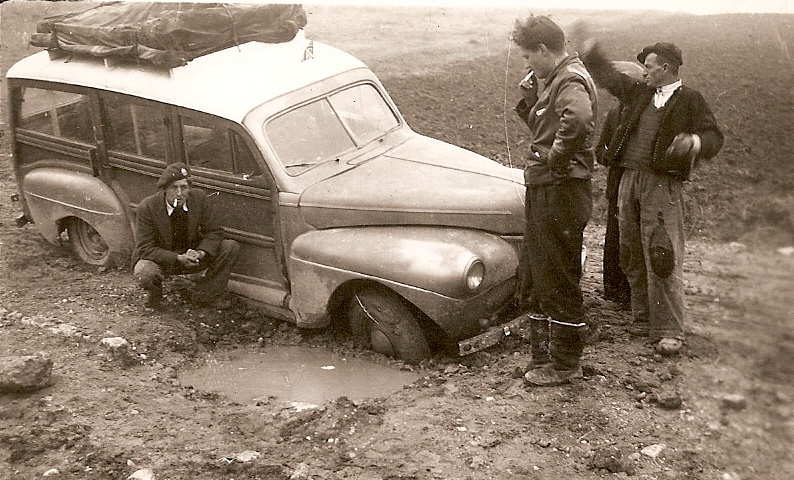I have a bit of a love affair with old cars. On the simplest level, I appreciate their classy retro style, but I also like what they represent in a more abstract sense. Each mile (or kilometer!) on that odometer is a journey. Maybe it's a trip to the store, or maybe it's a cross country trek on Route 66. They have a romanticism that conjures up an image of travel...adventure...freedom.
I'm excited to have a couple more additions to my Classic Car ACEO series. I've done my best to catch the shine of the chrome and the flowing lines within a trading card sized space. The small format is a fun challenge because cars have so much detail but there is only limited space to capture the essential form! As tempting as it is to try to add each glint, each reflection, each color shift, the small format forces me to focus and simplify.
 |
1950 Mercury. Available on Etsy
|
These two cars hail from the 1950s, a fascinating period for American car culture. The number of registered automobiles exploded from 25 million at the beginning of the decade to more than 67 million by 1958. Ownership of an automobile allowed workers to move to the suburbs and commute to work. The interstate highway system was laid out, simultaneously connecting the country together with fast travel, and isolating it with the bypass of local towns and culture. Business catered to the car culture and touring needs with service stations, motels, diners, and drive-in movie theaters. In turn, the cars started to reflect the hopes and dreams of society and the new space program, with the end of the decade seeing tail-fins reminiscent of rocket ships.
 |
| 1955 Cadillac. Available on Etsy. |
I'm also beginning to explore some of the classic European autos I see around here. Whereas the 1950s Cadillac and Mercury have very loooong lines, the Fiat 500, which I've added to my
Postmarked Holland series, was initially released in 1957 but has a completely different form. The lines are short and compact, and it is very smooth without bold angles. Along with cars such as the Citroen 2CV and the later versions of the VW Beetle Type 1, the 500 was a response to the need for economical post-war automobiles. I think the popularity of these cars is apparent from the fact that so many of them can still be found on the road today.
 |
| Fiat 500. Available on Etsy. |





No comments:
Post a Comment